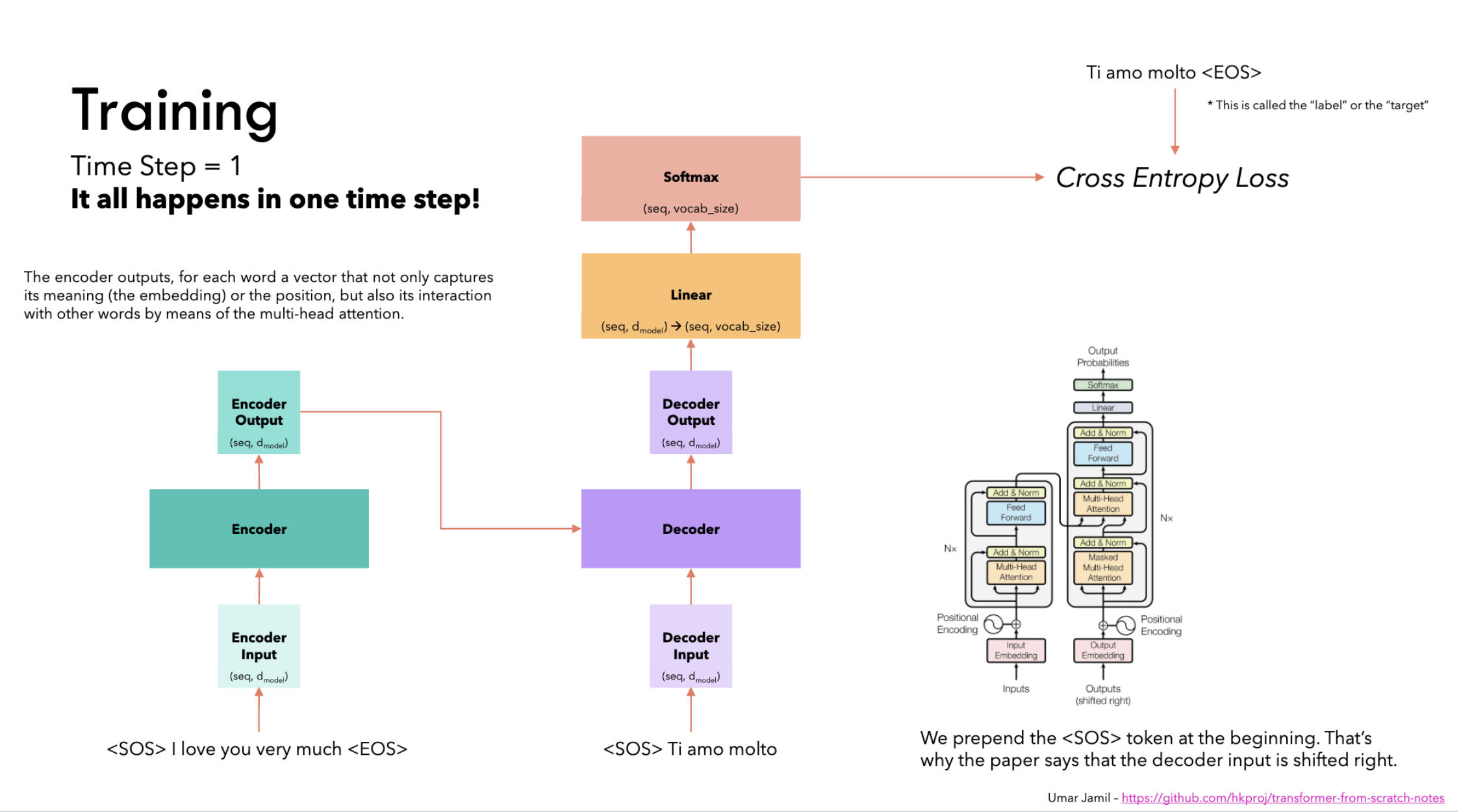Transformer
The main motivation for the transformer architecture was to improve the ability of neural networks to handle sequential data.
Transformers can process data in parallel.

A rough draft of the dimensions (inspo from Shape Suffixes)
B: batch size
L: sequence length
H: number of heads
C: channels (also called d_model, n_embed)
V: number of models
input embedding (B, L, C)
Components
- Feedforward
- LayerNorm
When you compute attention, is it (L,C) * (C,L) or (C, L) * (L,C)?
- We want to model the relationship between every token to every other word in the sequence i.e. (L, L)
You get a matrix of shape
(B, h, L, d_k) @ (B, h, d_k, L) → (B, h, L, L)
From 3B1B: There’s masking, so that your current word doesn’t affect the previous word.

- Really good visualization from 3b1b
Resources
- Annotated transformer
- Illustrated transformer
- LLM Visualization
- Original paper Attention Is All You Need by Vaswani et. al.
- https://goyalpramod.github.io/blogs/Transformers_laid_out/
- Attention is all you need (Transformer) - Model explanation (including math), Inference and Training by Umar Jamil
- the slides
- Just read this blog
- I really liked these slides from Waterloo’s CS480
Some really good videos:
- History of Transformers
- The Transformer Architecture
- Vision Transformer (An Image is Worth 16x16 Words) video
- Swin Transformer
- Vision Transformers
Attention computes importance.
So the left is the attention block.
Think of it as a multi-class classification for 32K tokens.
Nis the number of layersDon’t be confused. it’s NOT the number of layers of the feedforward network. This is the number of blocks.
- is like 40 for LLama
- can be 512
Implementation Details
The part about how training is fed got me choked up, from reading Annotated transformer (reading it is really really helpful though).

Gold target:
<bos> I like eating mushrooms <eos>
When we build inputs/labels:
- labels (trg_y) =
I like eating mushrooms <eos>
So the very first training example is:
- Input to decoder at position 0:
<bos> - Label at position 0:
I
That means: the model is explicitly trained to predict the first word (“I”) given only <bos> and the encoder context.